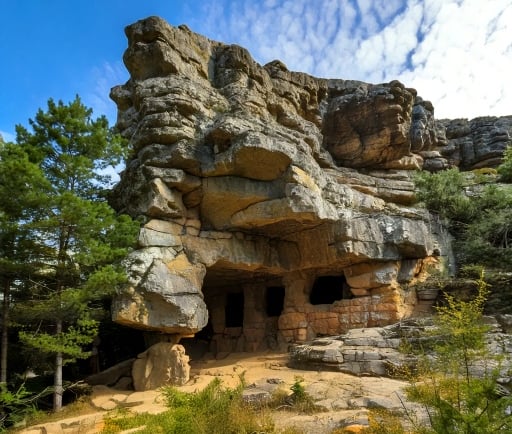Understanding Boudinage Structures in Geology


Introduction to Boudinage Structures
Boudinage structures represent a fascinating aspect of geological formations. These structures are primarily characterized by their cylinderlike shapes that form distinct layers of deformed rock. The process of boudinage results from the stretching of rock layers during tectonic forces, leading to the formation of boudins or segmented structures within the rock mass.
Formation and Characteristics of Boudinage
During tectonic activity, particularly in regions where compressional forces are prevalent, boudinage occurs as a response to mechanical stress. As rock layers undergo deformation, they begin to incise and elongate into barrel-shaped forms. Typically, these layers can take on various appearances, including lenslike, rectangular, or even more complex shapes, yet their defining feature remains the cylindrical cross-section.
The visual manifestation of boudinage is similar to that of sausage links, where each boudin resembles an individual segment formed through the secondary deformation of initially uniform layers. This pattern not only highlights the dynamic nature of Earth's lithosphere but also provides insight into the historical geological processes that shaped the landscapes we observe today.
Significance in Geology
The study of boudinage structures is essential for geologists as they offer valuable clues regarding the stress history of the Earth's crust. By analyzing the orientation, spacing, and shape of boudins, researchers can deduce information about the tectonic environment during their formation. Furthermore, understanding the mechanics behind these cylinderlike structures allows for broader insights into the interplay between different geological formations.
In addition to their significance in structural geology, boudinage can also contribute to the context of metamorphic studies. Many areas where boudinage is present are associated with metamorphic rocks, indicating that these features can often serve as markers of geological transformations within specific environments.
Conclusion
Boudinage structures are not merely interesting geological phenomena; they provide critical insights into the history of tectonic events on Earth. Their cylinderlike, barrel-shaped forms make them easy to identify, and their characteristics can greatly enhance our understanding of geological processes. As scientists continue to study these layered formations, boudinage will undoubtedly reveal more about the dynamic nature of the planet's crust.
